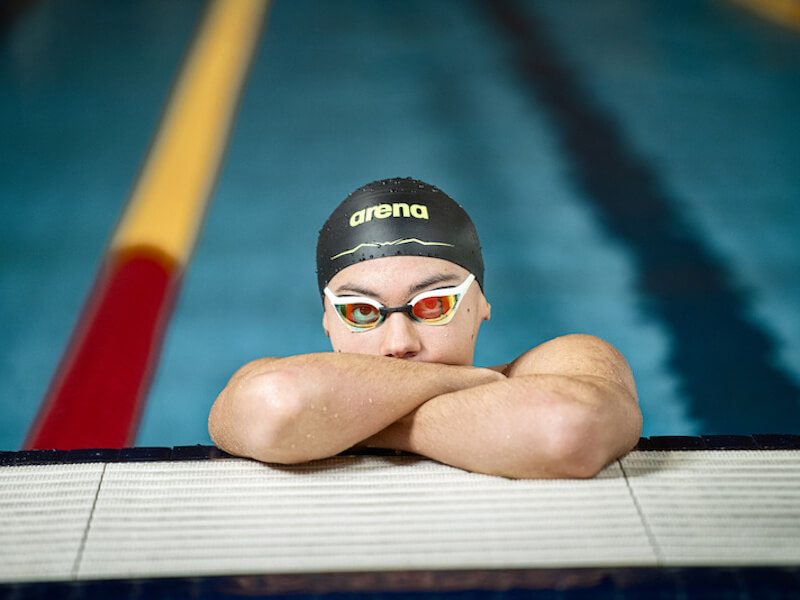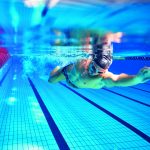10 Freestyle Drills for Improved Technique and Endurance
Freestyle just might be some of the most fun you can have in the water. It’s the fastest stroke, which gives swimmers the best results they can wish for; smashing a PR feels even better when the numbers are so low already.
An improved freestyle technique and a stronger, fitter body can all be achieved through regular freestyle drills. In this article, we’ll share with you some of our favorite swimming drills specifically designed to improve your freestyle swimming. Lots of training does carry with it a potentially higher risk of injury. So, following the freestyle swim workouts, we’ll give you some advice on how to avoid injury while swimming freestyle so you can enjoy longevity while working on your swimming technique.
Our Top Freestyle Drills

Based on the results of an ESPN poll of sports scientists, academics, and top sports athletes, swimming requires not only endurance and strength, but also fine-tuned characteristics, such as flexibility, analytical thinking, and hand-eye coordination. Even beginner swimmers quickly learn that all the little details matter. Your body position is paramount, a high elbow can make all the difference during your catch, and even your fingertip placement can affect your hydrodynamics.
Coordination means implementing a motor scheme physically that your brain has planned. It takes good coordination to develop an efficient technique, and this can only be achieved by practicing while thinking about the mind-body connection at every training session.
With this in mind, here is a set of 10 drills to help you improve your technique, particularly your freestyle:
1. One Arm Only
Swim freestyle for a length using a single arm with your other arm either extended along your side or out in front of your head. If you’re struggling with balance or endurance during this drill, you could hold a kickboard with your resting arm to improve buoyancy.
2. Freestyle With Breaststroke Legs
Perform a breaststroke leg kick every cycle of arm strokes (right and left), breathing facing forwards as you make your leg kick. If you want to add more cardio to this drill, you can start underwater with a dolphin kick before your breakout. This will ensure your lungs and heart will be working overtime.
3. Fist Freestyle
Swim freestyle with your fists clenched. This will force you to put in more arm reps to make distance as your catch will be much weaker. As a variation, start with clenched fists and then release one finger — starting with your little finger — every two arm strokes. You can also reverse this drill by using hand paddles to increase the power of your catch while adding resistance to your arm movements. This, in turn, will change the focus of this drill from cardio to strength and endurance.
4. Alternating
Swim freestyle, pausing as your hand enters the water until your opposite arm has caught up, and pause for approximately two seconds.
5. Long Sculling
Swim “doggy paddle” using your arms to provide all the thrust from out above the water down to your thigh, performing your arm recovery phase underwater.
6. Short Sculling
Block your elbows along your sides and thrust underwater using only your forearm, which “oscillates” alongside your body to create a semicircle.
7. Sculling Behind Your Head
Lie on your back with your feet facing forwards and perform short and quick oscillating movements with your hands by rotating your wrists to drive yourself toward the other end of the pool.
8. Elbow Bending
Accentuate your elbow bend during the arm recovery phase (external phase), touching your armpit with your hand and pausing for approximately two seconds.
9. Varying Your Arm Speed
Swim freestyle with 3-4 fast arm strokes and 6-7 slow arm strokes. This is a type of HIIT training that will help you to improve your cardiovascular fitness.
10. Rolling
Swim freestyle, breathing both sides, and pause briefly after you have completed your body rotation and taken your breath. This will slow you down, making you work harder. For a serious upper body workout, you can ditch the flutter kick and use a pull buoy, putting all of the work on the arms. This can make you more cognizant of your hand entry, improving your freestyle technique in the long term.
These freestyle drills should keep you busy for some time. Make sure you give every one of them a try and be creative by combining sets to create taxing swim workouts. For more ways to improve your swimming, try doing an additional drill for every day of the week (including kicking drills).
Staying Safe During Your Freestyle Drills

There’s nothing worse than creating the perfect training plan and then having to take time off from your workouts due to injury. Whether you’re training for a triathlon or swimming fun or exercise, there’s one thing we all have in common — we want to be in the water! Read these simple rules to lower your chances of unwanted injuries.
Keep Solid Form
Many of the above drills are designed to work your body hard, and pushing yourself close to failure will reap the rewards you are after. However, when the body starts to really suffer, you must keep your mind sharp. Try to stay aware of the nuances of your body’s movements. If your freestyle technique starts to slide, it’s time to stop. Poor technique can lead to strains and can really set you back. If you’re unsure about your form, get your swim coach to watch you, or failing that, video yourself swimming and review your swim strokes.
Always Warm Up
This goes for any sport, swimming included. Get your muscles nice and warm before you start to work out hard. This will reduce your risk of injury. Warming up before entering the pool is not advised, as the time it takes to get changed and the change in temperature of the water will cool you down again.
Stay Out of the Water if You Don’t Feel Right
If you’re suffering from any kind of fever or illness that diminishes your abilities, stay out of the water. It’s not fair on your body or other swimmers around you as it will raise your chances of injuring yourself or others. Plus, exercising when you are ill may slow down your recovery.
Be Aware of Your Surroundings
Unless you’re lucky enough to have your own private pool or you train in a secluded open water spot, chances are you’ll be sharing the water with other swimmers. Use your peripheral vision while swimming, and take a note of who’s around before you start swimming. Be aware that some of these drills will significantly speed you up or slow you down, so pick the correct lane for the speed you’ll be swimming in to avoid collisions.
Try Some Freestyle Drills Today

There’s no time like the present. If your freestyle needs some work or you just need a solid workout to improve endurance, strength, and cardio, trying some new freestyle drills will help.
Try out these ten drills, and keep yourself safe to avoid injury so you can keep swimming. Remember to never compromise form, always warm up, stay home if you’re unwell, and be aware of your surroundings while you swim.
Some of these drills will benefit from a kickboard or pull buoy. Head to arena’s online store to get all the swim training tools and quality swimwear you need.
Written by:
arena coaches
Swim coaches, trainers and experts will give you all kinds of tips for performing at your best in both training and races.







